FEATURE Marvellous Mangroves in Coronie, Suriname
 SURINAME – In early May, two dozen students from Anton de Kom, University of Suriname spent three days of intense activity learning all about Marvellous Mangroves in the town of Coronie on the coast of Suriname. Led by MAP’s Education Director, Martin Keeley, the workshop was co-sponsored by MAP, WWF and SORTS, and used the Marvellous Mangroves in Suriname teachers resource guide as a basis for its information and activities. The MM guide was first introduced to teachers and students in Coronie 2016 and since that time has been part of an extensive program given in the communities of Nickerie, Commenwije, Coronie and Galibi. Representatives from organisations ranging from eco-tour guides from the United Tour Guides of Suriname (UTGS) to government Game Wardens and trainee teachers plus several schools have since taken the program. The students from Anton de Kom University represented four different disciplines – Economics, Environmental Science, Mining and Agriculture/Forestry – the first time this kind of inter-disciplinary ecological training has taken place in Suriname. Ms. Joan Telgt of the Mangrove Forum, Surinam, who helped to organise the group says the inter-disciplinary exposure is essential for students to fully understand ecological systems and the way they function. READ MORE AFRICA Makoko: the fishing community running out of fish

NIGERIA – There is a legend about the neighbourhood of Makoko. It holds that birth in the “world’s largest floating slum” is celebrated by the father throwing his newborn into the Lagos lagoon. If the infant floats it is embraced by all. A baby that drowns is illegitimate and its mother must be banished from the community. “But all babies float,” is a refrain you hear, often accompanied by a mischievous smile. Although a terrifying myth, it defines the lagoon’s importance as the linchpin of life in Makoko, where residents eke out a living from the polluted waterway snaking through Africa’s most populous city of around 20 million people. On a cloudy Monday morning, Jacob Lodun, 20, readied his boat for a 12-hour slog on the water. A fisher born in Makoko, this has been Lodun’s daily routine since he was nine. Back then he and his father would return home from a trip with scores of catfish and a heap of smaller species. Some would be cooked up in pepper soup while the rest went to early morning markets. “Now we don’t get any fish to kill,” he said. “The fish are running further away.” Sat in a dugout canoe with no outboard engine, he is unable to chase them. READ MORE AMERICAS Equator Prize 2019 winners announced for local innovative climate solutions

USA – The UN Development Programme (UNDP) and partners announced today the winners of the 10th Equator Prize, recognizing 22 local and indigenous communities from across the world. The winning organizations, which showcase innovative, nature-based solutions for tackling climate change, environment, and poverty challenges, will be honored at a celebratory gala on 24 September in New York. This is the first time the Equator Prize has been awarded to groups from Guinea-Bissau, as well as to indigenous communities in Australia and the United States. Winners are also based in Benin, Brazil, Cameroon, Ecuador, India, Indonesia, Kenya, Micronesia, Nigeria, Pakistan, Peru, Tanzania and Vanuatu. UNDP Administrator, Achim Steiner stated, “Every day, thousands of local communities and indigenous peoples around the world are quietly implementing innovative nature-based solutions to mitigate and adapt to climate change. The Equator Prize is both a recognition of their exceptional ideas and a way to showcase the power of people and grassroots communities to bring about real change.” The winners were selected from a pool of 847 nominations across 127 countries by an independent Technical Advisory Committee of internationally renowned experts. READ MORE Mexicans turn to ancient Aztec floating gardens to revive mangrove forests
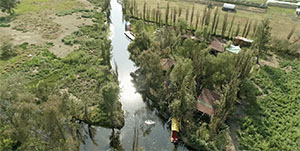
MEXICO – There are few green places to take refuge from the bustle of overcrowded Mexico City. That's why the chinampas — floating islands built more than 500 years ago by the Aztecs — draw so many visitors. At weekends, the canals of Xochimilco in the south of the city, where these floating islands are found, are filled with people in small colorful boats, as mariachi bands and food sellers pass by. But the chinampas serve another purpose. Made from fertile soil collected from the bottom of the city's lakes, they were originally built to grow food. They're still an important source of food today, producing some 40,000 tons of pumpkins, corn and other staples. Now, 500 kilometers (310 miles) away from Mexico's capital, around the port city of Veracruz, some hope this ancient technology will help with another environmental problem. The loss of mangrove forest has left the coast unprotected and open to erosion and storm surges and means sea creatures, such as crabs, no longer have a place to live — that's bad news for fishermen there. Pro Natura Sur, one of the environmental organizations behind the project, hopes planting mangroves on the chinampas will help revive the area's old ecosystem.WATCH VIDEO Brazil's mangroves on the front line of climate change

BRAZIL – Fishermen like Jose da Cruz have made their living for decades hunting for crabs among Brazil’s vast coastal mangrove forests, dense thickets of twisted plants in deep black mud that grow where fresh-water rivers meet the brackish Atlantic Ocean. Cruz, who is known by the nickname Vampire because of his distinctive teeth, doesn’t use a rod and reel or a net. Instead he parks his two-foot-wide boat at the shore of the Caratingui river and wends his way on foot through the tangle of mangroves to dig out crabs with his hands from the dark muck. The four or five dozen he captures in a day will earn Cruz about 200 reais ($50) per week, enough to get by, he said. A battery-powered radio may be his principal connection to the outside world, but Cruz knows about global warming. “Nature is upset. … In Antarctica, it’s melting, nature is melting,” he said. “People, you have to have some awareness about what is happening. It’s clear what is happening.” Climate scientists lend credence to Cruz’s interpretation of what he sees. Rising water levels, they say, are a sign of global warming, which also causes water temperatures to rise, killing off some marine life. READ MORE ASIA The war widows protecting Sri Lanka's mangroves
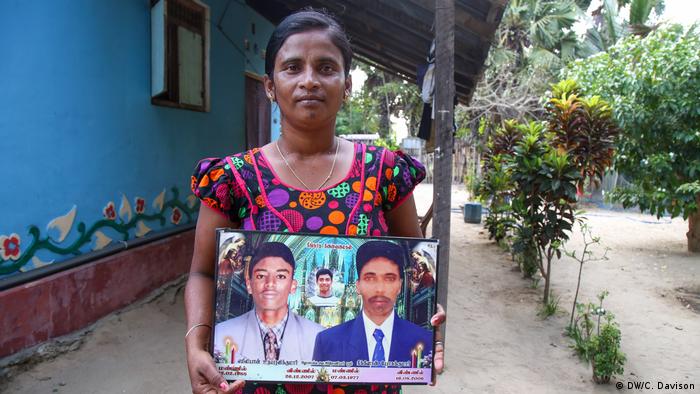
SRI LANKA – Sri Lankan women who lost husbands in the country's 25-year conflict are now protecting the country's mangroves — and combating gender stereotypes in the process. Like many other women in her village of Anphoniyarpura, and across the district of Mannar in northern Sri Lanka, 35-year-old Ushanthini Jesukumar relies on prawns and fishing for her primary source of income. Finding work can be a struggle, says Ushanthini, as rigid ideas about gender typically confine women here to the domestic sphere. "As widows, we face a lot of opposition if we go out to work," Ushanthini told DW. "People will talk badly about us."The women have not let themselves be deterred. Prawn catching is also more socially acceptable because it allows the women to find work in their village — not too far from home. Now, the mangrove lagoons that provide a breeding ground for the prawns and small fish they rely on are under threat. According to a joint global report by the World Wide Fund for Nature (WWF) and the International Union for Conservation of Nature (IUCN), "mangroves are being destroyed at rates three to five times greater than average rates of forest loss, and over a quarter of the original mangrove cover has already disappeared” READ MORE Indian women start their own business to save mangroves
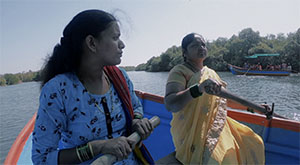
INDIA – In India, fishermen's wives are successfully challenging age-old traditions of patriarchy and gender stereotypes. Instead of waiting for their husbands to bring home fish, they've taken the oars into their own hands. They've become tourist guides and mangrove experts, earning their own living while helping to save the biodiversity of their environment. WATCH VIDEO Maldives faces elevated risk of coral bleaching

MALDIVES – Rising ocean temperature is accelerating coral bleaching in the Maldives, the Marine Research Center has warned, advising the government to suspend projects that affect the health of reef ecosystems. The MRC said in a statement that the Maldives has been classified at the ‘watch’ level by a satellite monitoring programme of the United States National Oceanic and Atmospheric Administration, which categories regions by No Stress, Watch, Warning, Alert Level One and Alert Level Two.“Coral bleaching status of Maldives could jump to warning level and even to Alert Level One in some parts of the country,” the centre warned. “Human activities may contribute a slower recovery of bleached corals. Activities such as dredging, land reclamation and beach nourishment projects, which are done at very large scale in Maldives, is damaging the environment of the coral reefs.” READ MORE Four poachers shot dead in Bangladesh mangrove gunfight

BANGLADESH – Four people accused of poaching threatened Bengal tigers were shot dead by Bangladesh police on Wednesday during a gunfight in a mangrove forest, officials said. Rapid Action Battalion (RAB) police challenged armed men on a boat in the Sundarbans, the world's largest mangrove forest, spokesman Mizanur Rahman said. The poachers opened fire sparking the battle, Rahman told AFP. Four bodies, guns and ammunition were found on the boat. The four were identified as members of a gang accused of poaching in one of the largest habitats for endangered Bengal tigers and Irrawaddy dolphins, local RAB official Tajul Islam told AFP. "These gangs have become a major threat to wildlife conservation," in the mangroves, Islam said. The Sundarbans, much of which is a UNESCO world heritage site, is swarming with people accused of murders and abductions as well as poaching. READ MORE EUROPE Summoners War 5th Anniversary Special! Let's Build A Mangrove Forest Together!

GERMANY – Com2uS announced that Summoners War has started a global CSR event so that players of the hit mobile game can participate in the celebration of its 5th anniversary. This worldwide event is a CSR project designed to present a healthy environment to future generations. Users across the world will participate in the event to collect Donation Fruits. When the total number of Donation Fruits reaches 50 million then Com2uS will make a donation to the Korea Green Foundation to support global environment improvement. The donation will be used to create and preserve a mangrove forest for future generations to live in a healthier environment, prevent global warming and help towards restoring the ecosystem. READ MORE GLOBAL More mangroves? Economies recover faster after tropical cyclones
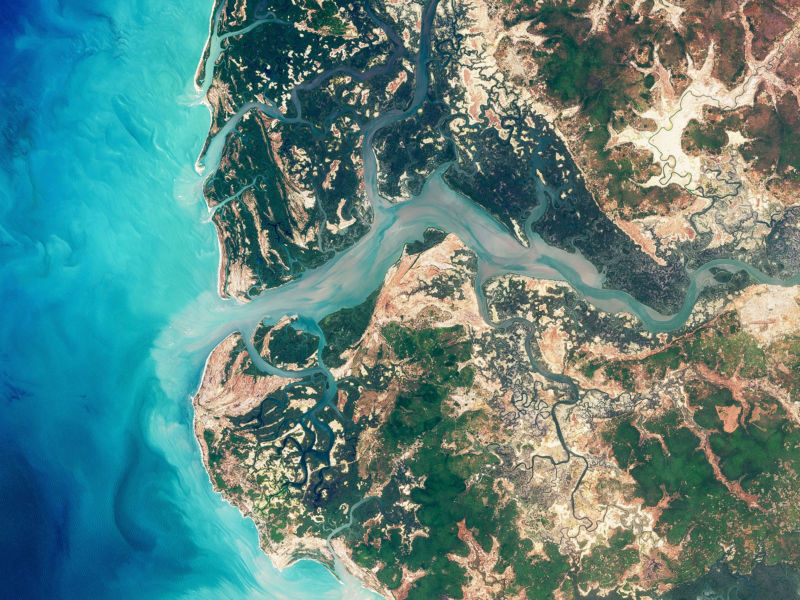
GLOBAL – A new study led by East Carolina University’s Jacob Hochard compared the economic impacts of tropical cyclones around the world with satellite data.To get a global perspective on the role of mangroves, researchers quantified two things: mangrove extent along coastal communities and economic activity. A global, high-resolution mangrove map allowed the researchers to calculate a standardized swamp width by dividing mangrove area by the community’s coastline length. For example, the average extent in their analysis of 23 countries' sea coasts was 6.3 meters of mangrove per meter of coastline. Measuring economic activity requires a little more ingenuity, as you can’t just look at reported statistics for many of these countries. Fortunately, the intensity of nighttime lighting in any location is easily determined from space and has been shown to be a reliable indicator of economic activity. Basically, if an area is doing well economically, there will be more lights on at night there. To find out how well mangrove swamps protect nearby communities, the researchers measured the change in lighting for the years after a tropical cyclone made landfall. They compared communities with the average mangrove extent and above-average communities at the 68th percentile (one standard deviation above the mean). Instead of about 6 meters of mangrove buffer, these communities had about 25 meters of mangrove. READ MORE Scientists for study on impact of microplastics on mangroves
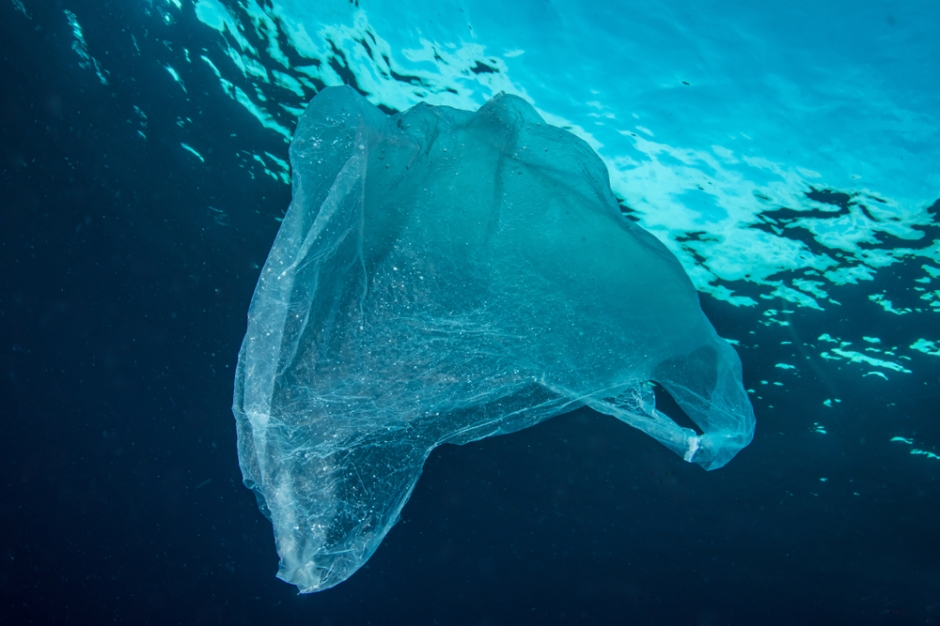
GLOBAL – Scientists have underlined the need to conduct a detailed study on the impact of microplastics on the mangrove eco-system in the country, as it is believed that these tiny plastic particles can adversely affect marine life. As far as Goa is concerned, the previous studies by the CSIR-NIO (National Institute of Oceanography), located near Panaji, had confirmed the presence of microplastics along the coastline in the famous tourist destination. Researchers feel that studies can be done in selected sites like the Zuari, Mandovi, Chapora, Terekhol, Talpona and Galgibag rivers and in Salim Ali bird sanctuary near Panaji. Microplastics, measuring less than five mm, come from a variety of sources including larger plastic debris that degrades into tinier pieces. These small particles can easily pass into sea and other water bodies, posing a potential threat to aquatic life. "It is important to know what type of microplastics are accumulated in the mangrove sediments and sediment-related flora and fauna, and their sources in abundance.READ MORE
Like this newsletter?
Pease consider donating to MAP to keep it going.
Giving could never be easier | ACTION ALERTSSea turtles or condominiums?
Sand mining and construction work would wipe out a marine biodiversity hotspot and destroy the livelihoods of local people, who have not been consulted. Please SIGN! Save Penang! Reject the 3-Islands Reclamation!
The lack of public consultation and detailed information about the project is shocking in view of the size of proposed reclamation which is 4,500 acres or 7 square miles
PLEASE SIGN
Tell HSBC: Stop Profiting From Destruction – Sign the petition Halt further destruction of primary mangrove forests in the Maldives. We are urging you to write letters to the recently elected president of the Maldives and his environmental minister View Sample letter Save Pulau Kukup National Park – second largest mangrove island in the world. Sign The Petition Like this newsletter? Pease consider donating to MAP to keep it going. Giving could never be easier 
UPCOMING EVENTS 2019 Environmental Science and Climate Change Conference September 10-11, 2019
 REGISTER NOW REGISTER NOW 
Restoring The Natural Mangrove Forest
Watch movie 
Community Based Ecological Mangrove Restoration in Rufiji Delta VIEW VIDEO Video: Mangroves for the Future – A look bacK. As the latest phase of Mangroves for the Future (MFF) draws to a close, this video highlights some of the project’s most successful initiatives – from local women supporting national park management in Viet Nam to an island in the Maldives that has become a model for waste management, and everything in between. View Here Making the case for Emergency Climate Change Action
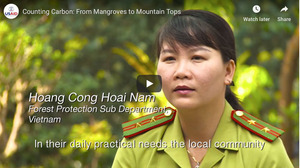
Counting Mangroves

Placencia mangrove workshop teacher's poem Volunteer with MAP – LEARN MORE Watch Children's Mangrove Art Calendar Promo 2019 Click Here  
MAP 2019 Children’s Calendar CLICK HERE You can help ensure that the knowledge and skills needed to conserve and restore mangroves is preserved in coastal communities READ MORE WANT TO GET INVOLVED?
Follow and Join MAP!    

Like this newsletter? Pease consider donating to MAP to keep it going. Giving could never be easier

VOLUNTEER OPPORTUNITY
MANGROVE ISSUES Want to learn more about mangroves?
Our short presentation will give you a better understanding of the issues we are working to solve. WATCH PRESENTATION What is CBEMR? Easy to follow fact sheet – CLICK HERE What is EPIC? – The Ecosystems Protecting Infrastructure and Communities (EPIC) project: the role of ecosystems as protective barriers against climate induced hazards MANGROVES APP AVAILABLE
A pictorial field guide for easy identification of various mangrove species and learning about the mangroves ecosystem. CLICK HERE View MAP’s uploaded Videos at MAPmangrover’sChannel
Question Your Shrimp Consumer/Markets Campaign!
WATCH VIDEO Mangrove Restoration in Asia – Watch Short Video The Value of Mangrove Forests View Video CBEMR Experience Exchange MAP 2017 English Subtitles
VIEW THE VIDEO Mangroves: Guidebook to Malaysia – Click Here
Mangrove rehabilitation in Asia – Local Action and cross-border Transfer of Knowledge for the Conservation of Climate, Forests and Biodiversity VIEW VIDEOS HERE SHARE MAP'S VISION
CLICK HERE to watch short introductory video. Together we can work "at the roots of the sea". Our short documentary, Reducing the Risk of Disaster through Nature-Based Solutions : Mangroves

Exclusive Interview with Alfredo Quarto, Co-Founder and Executive Director of Mangrove Action Project – See more
Marvellous Mangroves Curriculum The Marvellous Mangroves Education Forum is an online hub for those utilizing the Marvellous Mangroves (MM) Curriculum. It gives students, teachers and anyone interested in mangroves, the opportunity to learn and share ideas themed around the curriculum, to connect and communicate with others around the globe whilst exploring mangroves from your computer or on the go. VISIT 
The award-winning Marvellous Mangroves (MM) curriculum educates children on the importance of mangroves and their ecological functions, teaching them about modern challenges and mechanisms for sustainability. VIEW VIDEO Marvellous Mangroves Curriculum in Bangladesh – WATCH VIDEO
MARVELLOUS MANGROVES IN BRAZIL
En Portuges 
Marvellous Mangroves – A Curriculum-Based Teachers Guide. FOR MORE ON MAPs AWARD WINNING CHINA MANGROVE CURRICULUM VISIT

VIMEO SHOW
VISIT OUR "MM" WEBPAGE Check out our presentation for more details on Marvellous Mangroves Read this 10 page history of the development of MAP’s educational curriculum VIEW DOCUMENT
Article in Canada's Green Teacher Magazine – Read More
Like this newsletter? Pease consider donating to MAP to keep it going. Giving could never be easier
Green Planet Fundraising Assists MAP – LEARN MORE
Volunteer Opportunities with Mangrove Action Project CLICK HERE
"Question Your Shrimp" Campaign Question Your Shrimp- Don't Buy or Sell Imported Tropical Shrimp! Sign the Petition Learn more about the affects of the shrimp industry on mangroves by visiting our blog
Editor’s Note: Mangrove Action Project’s Executive Director, Alfredo Quarto was interviewed about shrimp by Green Acre Radio’s Martha Baskin
LISTEN TO INTERVIEW Information sheds clear light on shrimp-mangrove connection
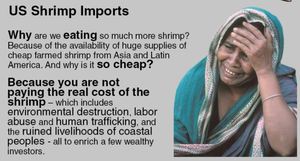
SEE DETAILS MANGROVE/SHRIMP Sign the Consumer's Pledge to avoid imported shrimp
Not yet a MAP News subscriber?
Click here to subscribe. Note to Our Readers: We strive to keep active links in our newsletter. However, due to circumstances beyond our control, occasionally links to stories may become broken. If you find a link to a story is not functioning, please cut and paste the headline into your browser search bar. In most cases you should be able to locate the original story.
|































